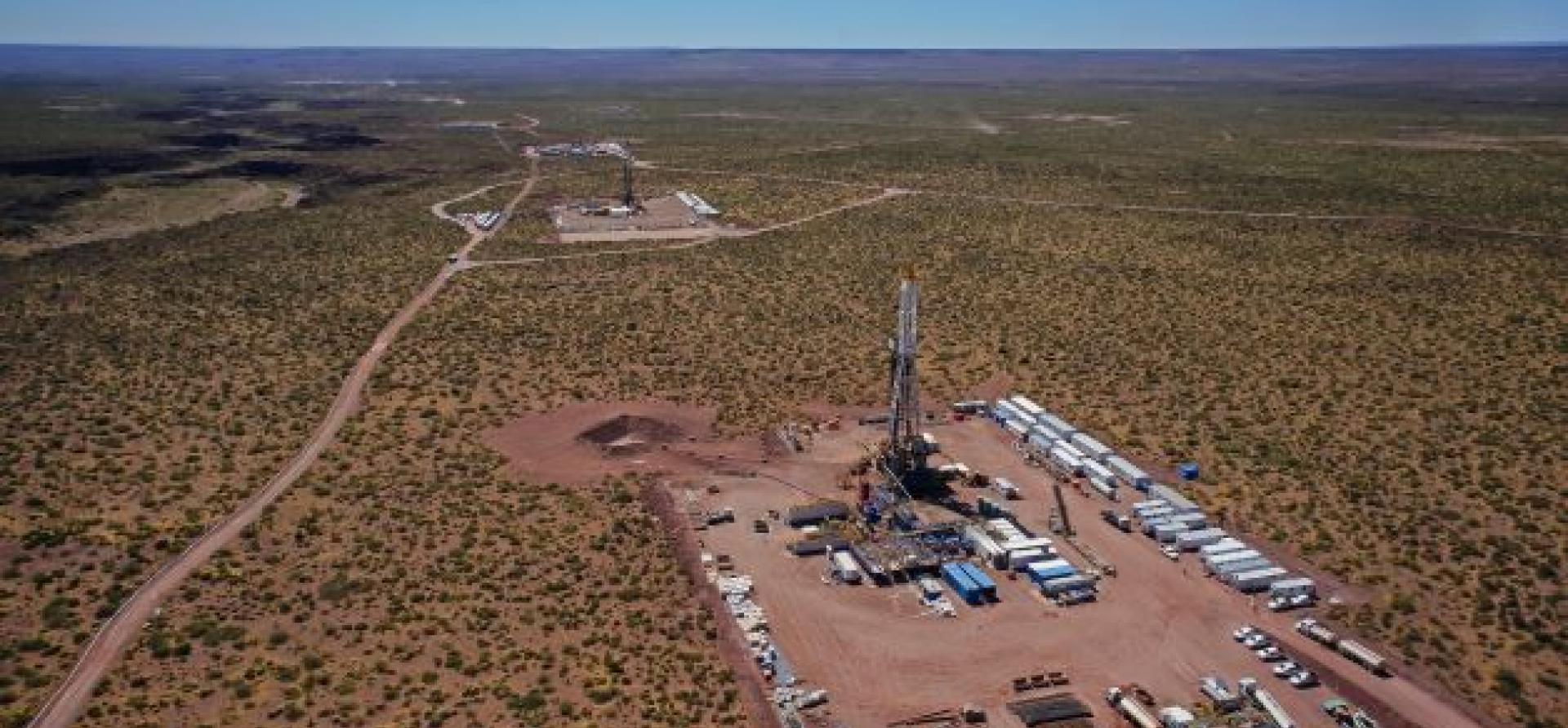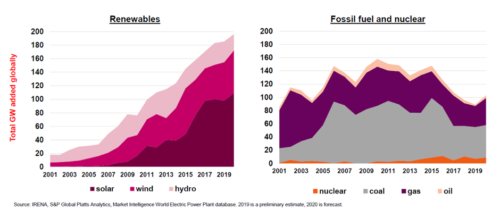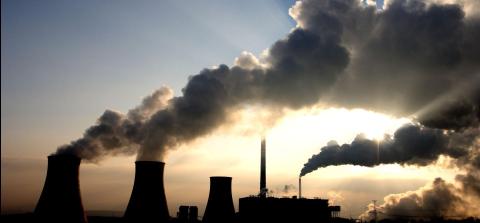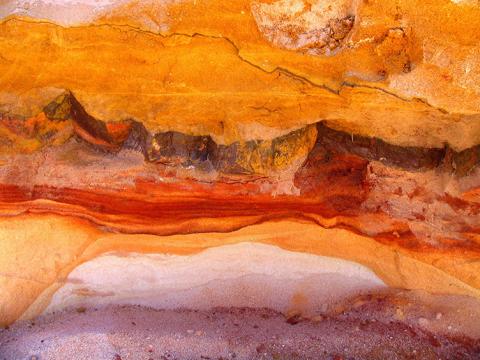IEEFA Australia: Origin pulls the plug on gas exploration in the Northern Territory. Who’s next?

Key Findings
Gas executives see very little demand for their product beyond 30 years, financing costs for fossil fuel projects are increasing and the pandemic continues to take an economic toll.
Whether prices are low or high, it is not good for the fracking industry. Too low and they can’t make money, and too high and they lose market share to renewables.
Oil and gas companies are cutting projects while some large renewable projects, on a globally significant scale, are forging ahead.
In the past few weeks, we have seen a flurry of activity in the oil and gas industries. Fracking companies in particular have been trying to respond to both the oil crash and the coronavirus crisis with a business-as-usual approach.
Globally, renewables are overwhelming new builds of both fossil fuels and nuclear.
In the Northern Territory of Australia, where there are numerous exploration projects, the government had previously been saying that oil and gas exploration should continue, despite the economic downturn and the implications of the coronavirus with worker-to-worker contact.
Two days ago, Origin called for an indefinite pause and exit from fracking exploration operations in the Northern Territory’s Beetaloo basin, citing the pandemic and inability to test and quarantine workers.
IEEFA NOTES THERE IS A MORE PRESSING REASON THAT ORIGIN HAS MADE THIS CALL. Globally renewables are overwhelming new builds of both fossil fuels and nuclear.
The gas industry has always said that conventional gas is a transition fuel. However, globally new gas-fired power plant builds today are smaller now than they were in 2001. If gas was truly a transition fuel, gas would be dominating and coal disappearing.
Globally Renewables are Overwhelming Fossil Fuel and Nuclear
The price of producing renewable energy globally has been continually falling and it’s getting harder and harder for fossil fuels to compete.
In Australia, renewable energy already supplies 23% of the national electricity market (NEM).
GLOBALLY, RENEWABLE ENERGY IS THE CHEAPEST SOURCE OF POWER GENERATION. Increasingly, it will be more so. It is a matter of time. In China, this will happen as soon as 2027. In Australia it’s already the case. Wind and solar are already cheaper, even unsubsidised.
Gas executives see very little demand for their product beyond 30 years from now
Inside the industry, gas executives see very little demand for their product beyond 30 years from now. The proposed Burrup project in Western Australia has a 50-year life. The Northern Territory fracking projects have a minimum 30-year life. But for both, it’s unlikely they will see out the 30-year life.
Before COVID-19, the gas industry saw increasing demand for the product, even if only within the 30-year projected life span. It will take years for all of us to crawl out of the economic effects this virus will leave.
Then there is another issue: there’s an oversupply of gas. The global gas glut will not resolve now until about 2030. It was previously projected to resolve by 2025. So why would any gas company look to build new gas now?
THE LARGEST COST OF RENEWABLE ENERGY IS THE FINANCING. Running a solar plant, for instance, costs very little. In our current climate, financing costs are declining for renewables as interest rates fall, while financing costs for fossil fuels are going up. This is because the debt markets have lost patience. They are downgrading the debt of oil and gas companies.
Currently, the U.S. fracking industry is experiencing a flood of bankruptcies and soon, some US$86 billion of debt will be due. This will be very difficult for the industry to manage. When enough fracking companies go broke in the U.S., this will force prices back up, at which point gas will become uneconomic to produce.
The U.S. fracking industry is experiencing a flood of bankruptcies
Whether prices are low or high, it is not good for the fracking industry. Too low and they can’t make money, and too high and they lose market share to renewables.
Origin’s Kyalla fracking project in the Northern Territory’s Beetaloo Basin was pulled this week. It is not, however, just the virus that is stopping them.
Origin, via a consortium, has already invested $25 billion at Gladstone LNG plants in Queensland. They need more gas to put through these plants. If they stop supplying those plants, they go bankrupt.
THE GAS INDUSTRY HAS BEEN GIVEN A FREE RIDE TO CONTINUE FOR SOME YEARS NOW, but operators are pulling out because they don’t have the money to continue.
Even if oil prices recover a little, fracking companies will still be below their break-even prices
In fact, they are pulling out globally. They simply cannot make money when oil is below $35/barrel. Even if oil prices recover a little, fracking companies will still be below their break-even prices. Simply, they cannot fund their projects at the moment.
At a time when oil and gas companies are cutting projects and shrinking their ambitions, some large renewable projects, on a globally significant scale, are forging ahead.
ACCIONA have just announced a new 1026 megawatt (MW) wind farm in Queensland. The project will begin construction in mid-2021 and will require a total investment of A$1.96 billion (€1 billion) over three years. The MacIntyre complex will be ACCIONA’s biggest renewable energy facility and one of the largest onshore wind farms in the world.
WHILE ACCIONA HAS BEEN INVESTING LARGE CAPITAL IN NEW PROJECTS, Woodside today has deferred a final investment decision on the major elements of its Burrup Hub expansion project as weak global LNG prices takes its toll.
Origin have previously said the Beetaloo Basin is liquid rich, which means they can see oil. This oil wasn’t discussed in the Pepper fracking enquiry, which is dishonest because they know it is there. But even with oil and gas underground, Origin cannot afford to continue.
Even with oil and gas underground, Origin cannot afford to continue
For Origin to receive any return from its LNG export business APLNG, they need oil to be higher than US$36/barrel. They will struggle this year to receive any return. They may need to prop up their failing investment with new equity.
And Santos, having looked at developing the Barossa gas field offshore in the Northern Territory, has now put the project on ice. Santos sold a 25% interest in Darwin LNG and the Bayu Undan offshore gas field to SK E&S for US$390m, contingent on the Barossa field getting the final investment decision. In the current climate, it could be that the Darwin LNG and Bayu Undan sale falls through.
SIMILAR TO THE U.S. EXPERIENCE, FRACKING IN AUSTRALIA HAS BEEN A FINANCIAL DISASTER. It is a massive loss making industry. Santos has written off nearly US$7 billion dollars over the past five years. Include Origin’s losses and this rises to more than US$10 billion.
This is before the impact of coronavirus. We will see further large write-offs from these companies. It will seriously strain them and their ability to raise debt or equity. The gas industry has also been lying about emissions, to the tune of 25-40%.
We will see further large write-offs from these companies
Gas emissions are 50% less than burning coal IF the gas is just used to produce electricity in a gas baseload plant. But in Australia, we use gas in gas peaking plants which are far less efficient. In those plants, gas is only 31% more efficient than coal. Australia also exports its gas. Making liquefied natural gas (LNG) uses an awful lot of gas and electricity. The LNG process involves burning an extra 17% of gas. In addition, if we look at fugitive emissions along the supply chain, even more methane is released. We only need about 2-3% of fugitive emissions to make gas worse than coal. Which means, gas is a high emitting fuel that needs to be recognised as such to reduce global emissions in line with the Paris Agreement.
GAS USAGE FOR POWER IN AUSTRALIA HAS DECLINED BY 59% SINCE 2014. Gas is not a transition fuel. The decline has occurred while renewable energy capacity has increased. Further, there is no committed investment into gas powered generation in Australia, and at this stage, it could only occur with bloated subsidies.
The Australian Energy Market Operator (AEMO) sees a smaller role for gas into the future. They have developed an Integrated System Plan (ISP), which states that under current policy conditions, without any changes, they see a decline in gas usage in Australia to 2042. Instead, the vast majority of proposed projects in Australia are in solar, wind, hydro and batteries.
In addition to living in a dream, the gas industry is a poor tax and royalty payer. The Australian government budget will be under enormous pressure over the next 12 months and will need to find more money.
THE GAS INDUSTRY HAS BEEN A VERY POOR CONTRIBUTOR IN TERMS OF TAX AND ROYALTIES. The Ichthys project for example will export $190 billion of oil and gas products over its 60-year life while providing no royalties to the Australian people.
Gas powered generation in Australia, and at this stage, it could only occur with bloated subsidies
Despite the LNG boom, the government’s Petroleum Resources Rent Tax (PRRT) take from the industry is set to fall $450m over the four-year budget estimates, from $1.4bn annually today.
There is no other industry where revenues rise dramatically and royalty income falls.
That the Federal and various state and territory governments allowed our resources to be given to an industry with barely any recompense is beyond comprehension.
In these troubled times, where government budgets are stretched to breaking point, reform of the gas royalty system is an obvious source of revenue.
Gas has a very uncertain future.
Some gas players have seen the light and are investing in renewable energy. If Australia had some modest policy to encourage companies to go that way, like a carbon tax or a tax on pollution, things would change very quickly.
There are proposals for the Northern Territory to be the solar plant for Asia. Renewable energy is a far more concrete way forward than pursuing gas, which is an outdated vision of the future.
Bruce Robertson is IEEFA’s gas/LNG analyst.
This commentary first appeared in Renew Economy.
Related articles:
The crash in global gas prices should mean a drop in electricity and gas prices in Australia
Why more gas won’t help Victoria
In extremis – crisis continues for Appalachian shale producers
















